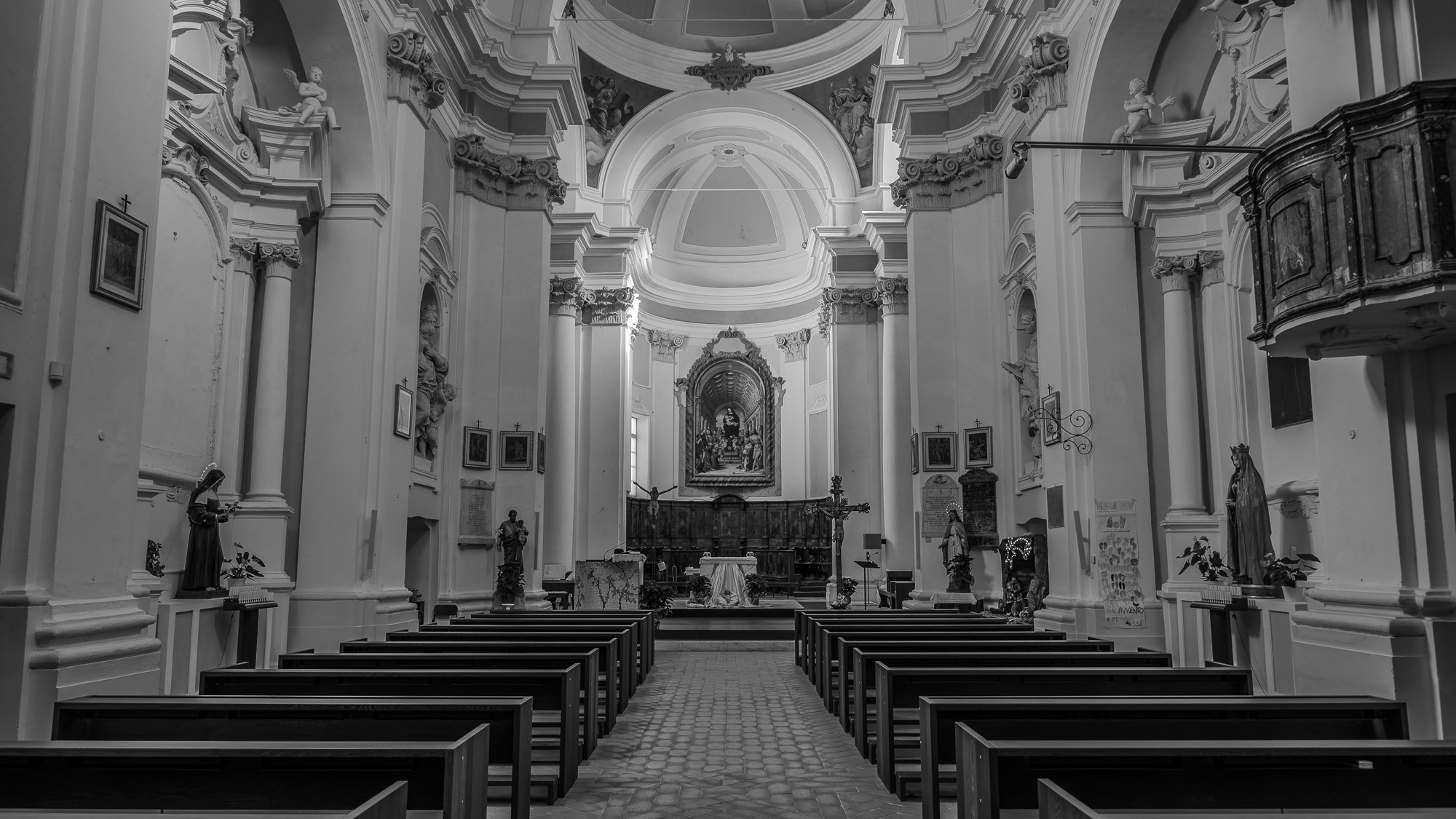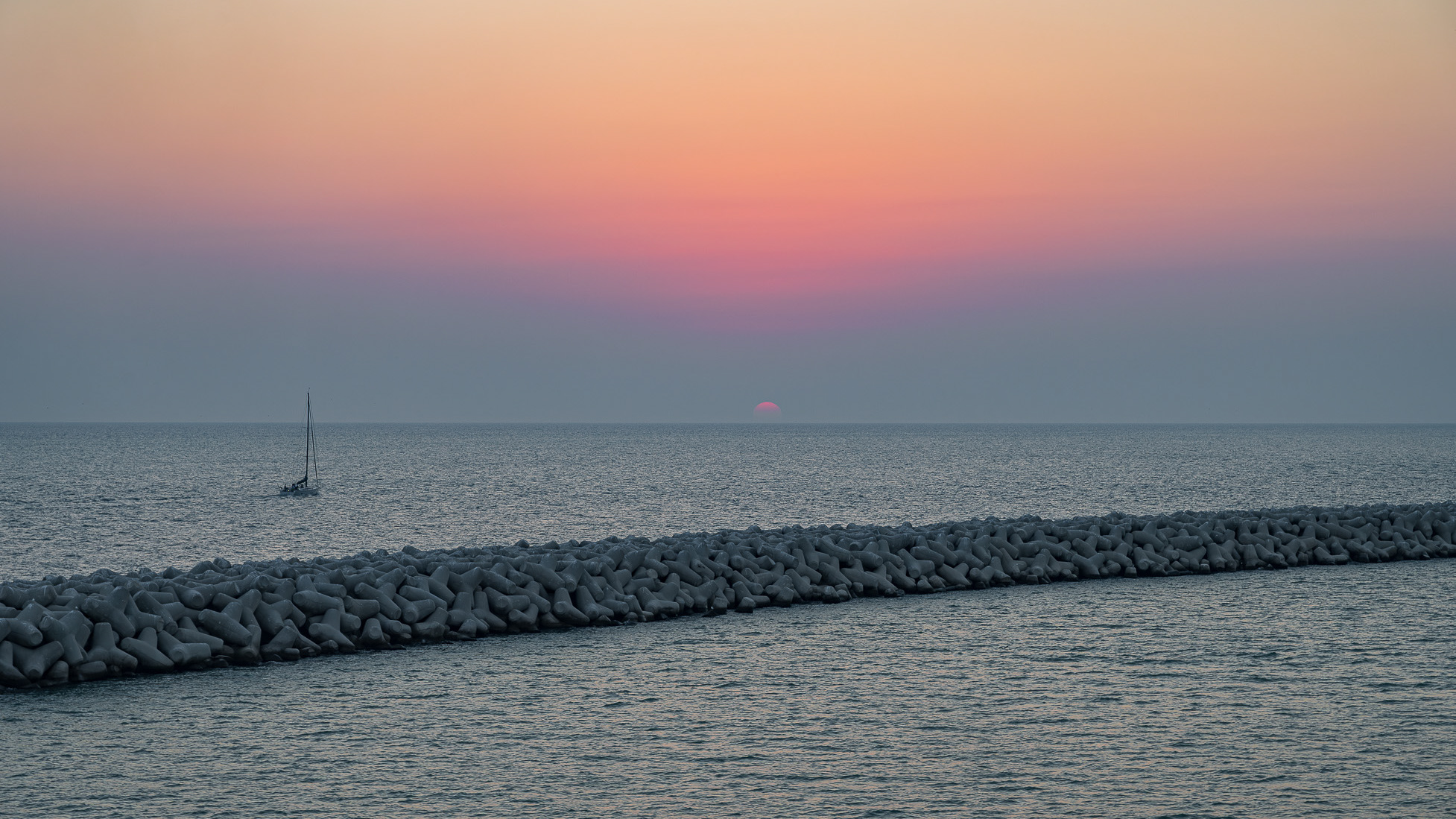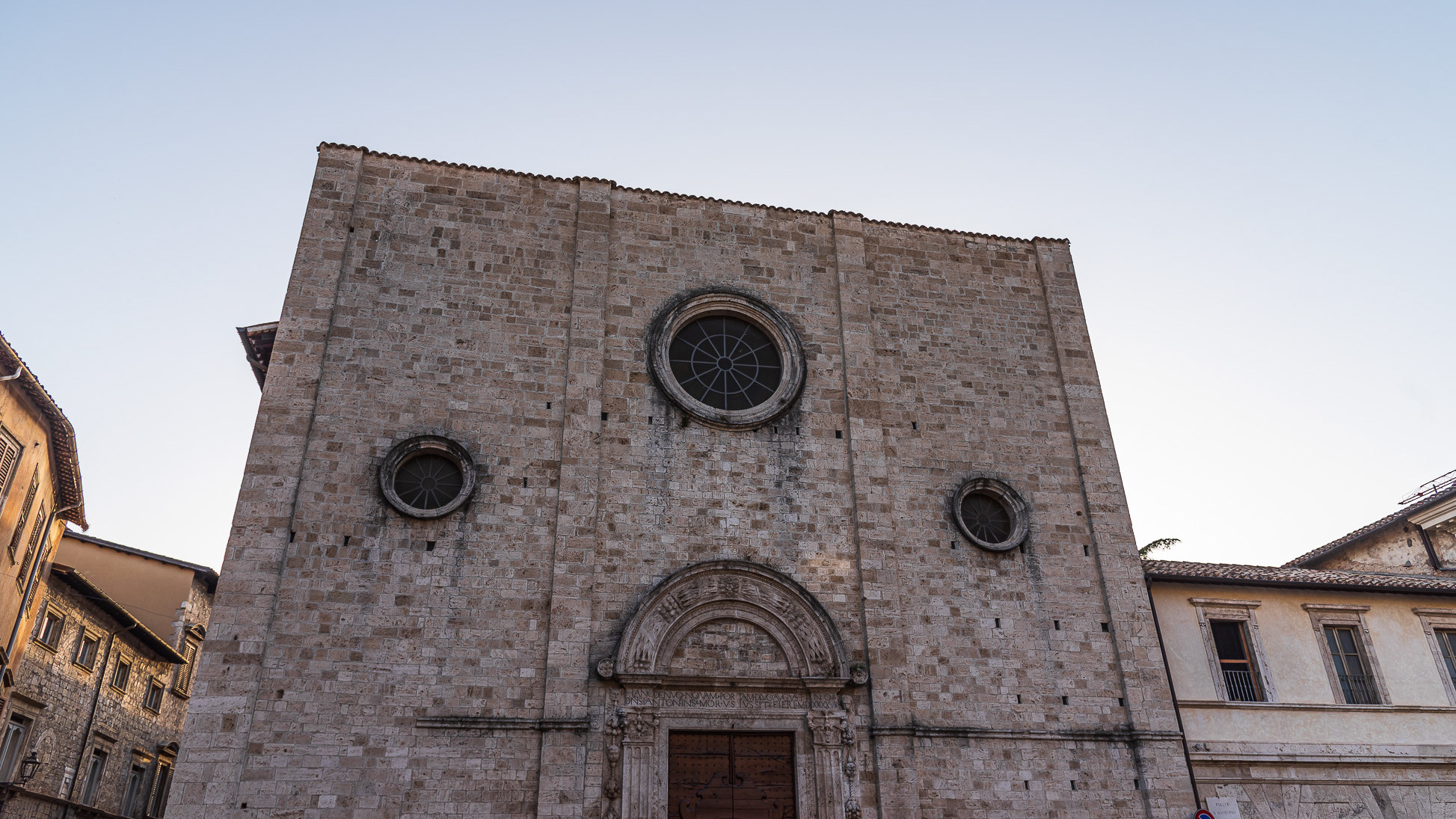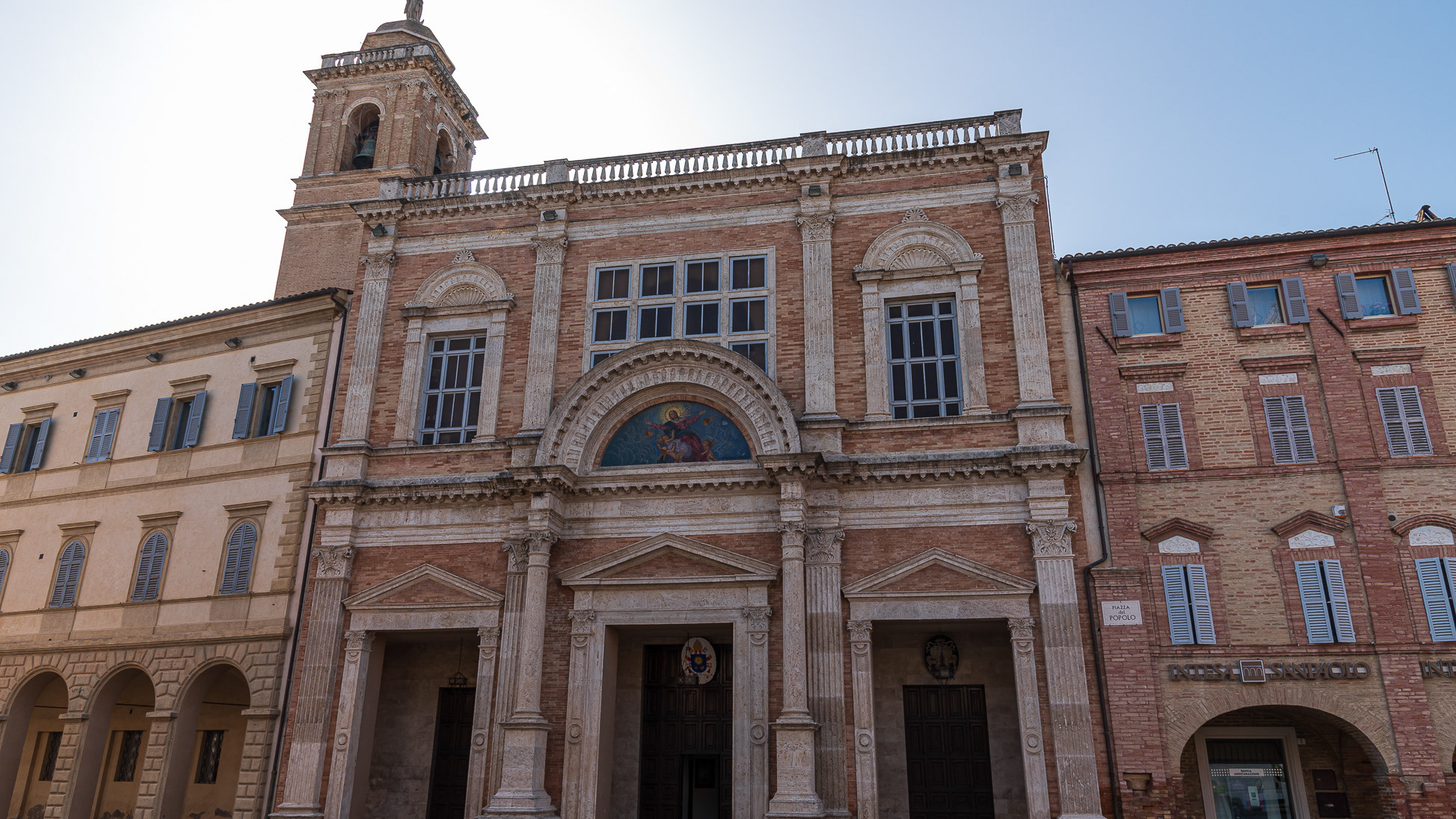Acquaviva Picena. Church of San Rocco
2024
Church of San Rocco (13th century), Romanesque. It is the oldest church in Acquaviva and today the interior appears nineteenth-century.
You may also like

2024
Montelupone. Church of San Francesco
Built in the 13th century, it has a Romanesque style exterior and a late Baroque interior, and also houses many works of art.

2023
Ancona. Glimpses of summer and sunrise

2022
Ascoli Piceno. The church of Sant'Agostino
The church of Sant'Agostino is a Catholic place of worship, located in the historic center of Ascoli Piceno in the homonymous square, in the San Giacomo district.

2022
Offida. Collegiate Church of S. Maria Assunta
Collegiate Church. Built between 1785 and 1798 by the Ticino architect Pietro Maggi, who substituted and profoundly changed the design by Ascoli Lazzaro Giosafatti; it has a neoclassical Louis XVI interior and a facade built only at the end of the nineteenth century in an eclectic style of brick and travertine. Inside, among other things, there is a thirteenth-century wooden casket with 26 ivory figurines of northern art, a fourteenth-century processional cross, a fifteenth-century reliquary, a sixteenth-century wooden group, a wooden crucifix by Desiderio Bonfini (1612) , paintings of the fourteenth, fifteenth and sixteenth centuries (Crivellesque school and school of Pietro Alemanno). The choir carved with twisted columns and mirrors in Verona briar with two orders of 14 stalls was built by Alessio Donati for the church of Santa Maria della Rocca but was transferred in 1794 to the Collegiate, together with the relics of San Leonardo di Noblac preserved in a urn placed inside the main altar, also in wood. On 12 November 1994 the body of Blessed Corrado da Offida was placed in the third altar on the left, solemnly moved from Perugia, where it had been kept in the now no longer consecrated Church of San Francesco al Prato. The church, despite the distance, was affected by the strong earthquake that occurred in L'Aquila on 6 April 2009: in fact, on the day of the earthquake some pieces of plaster fell off the bell tower.
2022
Recanati. Church of S. Anna
Built in 1400 and rebuilt in 1700. In it there is a faithful reproduction of the Holy House of Loreto as it was before the fire of 1921 and an ancient image of the Madonna.
2022
Recanati. Views
Recanati is an Italian town of 20 975 inhabitants in the province of Macerata in the Marche region.
2025
Marche, spectacular view and sunset
2022
Ascoli Piceno, Marche. The Cathedral of San Emidio
The city's cathedral, dedicated to the patron saint, stands on the site of a Roman public building, perhaps the Basilica del Foro, and is the result of multiple construction events that substantially range from the 11th to the 16th century.

2024
Spectacular winter landscape of the Marche hills

2022
Ascoli Piceno. The Cathedral of San Emidio
The city's cathedral, dedicated to the patron saint, stands on the site of a Roman public building, perhaps the Basilica del Foro, and is the result of multiple construction events that substantially range from the 11th to the 16th century. The main facade created by Cola dell'Amatrice opens onto Piazza Arringo, while the two side facades date back to the end of the 15th century. The interior, with three naves divided by polygonal pillars, from the end of the fifteenth century, houses, among the various works, in the central apse a late Gothic wooden choir from the first half of the fifteenth century, a wooden pulpit from around 1660; in the Chapel of the Sacrament the Polyptych of Sant'Emidio by Carlo Crivelli, the imposing decorative cycle by Cesare Mariani, and the crypt of Sant'Emidio, built in the mid-11th century which houses, in a 4th century sarcophagus, the relics of the patron saint of the city.
